The day started over a nice breakfast on the beach. My favorite food items was sliced up avocado with stringy onions and carrots in lemon juice. I also enjoyed a bowl of granola with dried bananas and fresh yogurt atop. True to the Schaffer way (Schaffer is my mom’s side of the family’s last name, her maiden name), my grandfather brought a enormous plate of French breads back from the buffet line. We love the carbs.
Over breakfast I learned my first two Swahili phrases. Mzuri sana – very good; and pole pole – very slowly. Leslie explained that Swahili is an aggregating language, where you can say the word twice for emphasis. Later, Robert explained to us that Swahili was born in Tanzania (Tanganyika), died in Uganda, and was buried in Congo. But it was very much alive in Burundi.
After breakfast we walked down to the beach to take in the view and meet Robert, our guide, to go through the day’s itinerary. On our way down, Leslie mentioned to him that we would have to walk “pole pole” as much as possible throughout the trip, for Marv. We all shared a knowing glance and smile.
As Robert briefed us, I took some pictures.
We then proceeded to our Jepp, which was to be our home for the next 10 days. We also picked up a navigator, Vienne, from the hotel, who knew Bujumbura much better than Robert (far away from his home country of Uganda).
My grandfather, Marv, has 4 rules in general when working with local guides. For our guide, Robert, the rules were the same. Marv explained:
- You must laugh at all my jokes.
- Whenever there’s a clean restroom, you must stop.
- You must only speak English when in my presence (even if you’re talking with the driver).
- If you don’t know the answer, you can’t say “I don’t know.” Make something up instead.
Rule 1 and 2 were easily followed. Rules 3 and 4 went out the window immediately.
For Rule 3, our guide, Robert, spoke English and Swahili. Our Burundi navigator, Vienne, spoke French, Swahili, and Kirundi – the local language. Leslie, my aunt, speaks French (well) and Swahili (marginally). Swahili kind of resembles Kirundi, so Leslie was able to make a go of it speaking with Vienne (mostly in French), and she would translate for the rest of us (in English). When Robert and Vienne spoke, it had to be in Swahili (which Vienne only spoke passably) – which never really got translated since it didn’t need to (navigational directions for the most part). Pretty much every language BUT English was spoken – so long for Rule 3! It reminded me of a time when I was touring Tunis with a Tunisian guide that spoke French, Arabic, Italian, and German. Since I was only learning Arabic, we defaulted to German since I could still speak that passably well from my time in college. Leslie felt similarly useful being able to put her French of ages past to work.
Rule 4 also went out the window quickly when Vienne answered nearly every question we asked with “I don’t know.” What is the major religion Burundi? What is the literacy rate? “I don’t know.” In his defense, we never translated the “Rules” into Swahili or French for him to hear them. And, he wasn’t a tour guide, so wasn’t really expected to know those facts and figures anyways. Hailing from Uganda, Robert similarly didn’t know the answer to many Burundi-specific questions like these. That’s OK – Rules 3 and 4 were not critical to Marv’s happiness! (nor to mine or Leslie’s!)
With the rules semi-established, an a standard operating procedure (SOP) established, we made our way to the Bujumbura animal museum. It sounds lamer than it was. Here are some highlights:
Leslie was quite the adventurer, getting up close and personal with almost all of the animals and snakes. Incidentally, they all loved her colorful bracelet. Marv noted that when we go gorilla tracking, she should leave it behind.
As part of the animal museum, there was also a cultural area where we could see traditional Burundi thatched huts and village layouts.
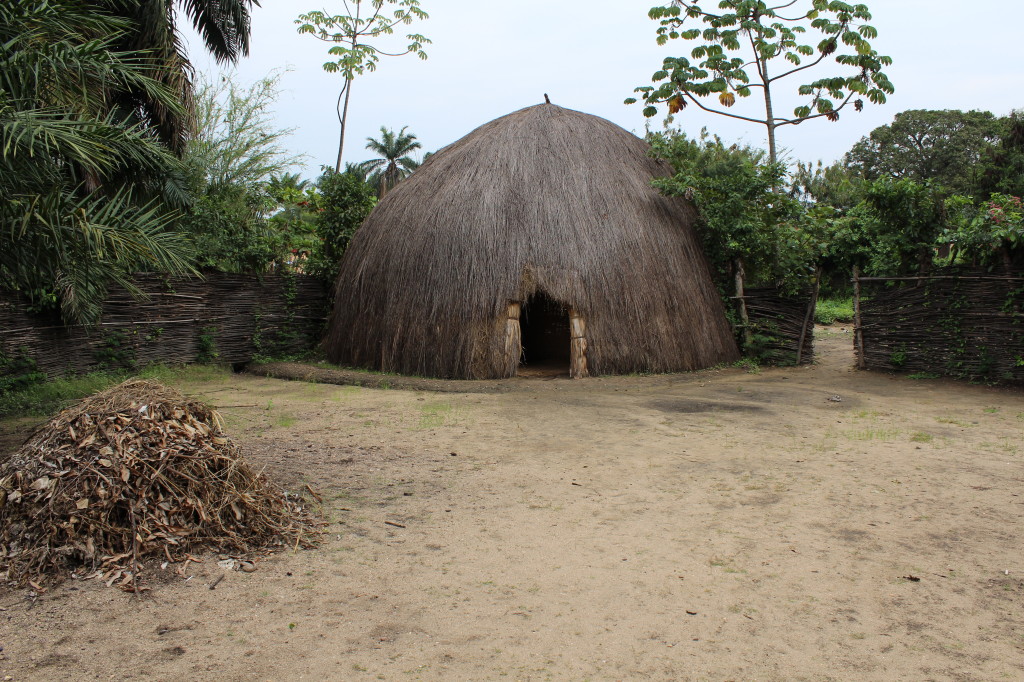 There were also handicrafts in different stalls we could purchase. Marv immediately set to work bargaining, and picked up one picture. I saw a few Masai and animal banana leaf paintings and velvet purses I liked, but ultimately wouldn’t make a purchase because the asking price was too high and the seller wasn’t budging.
There were also handicrafts in different stalls we could purchase. Marv immediately set to work bargaining, and picked up one picture. I saw a few Masai and animal banana leaf paintings and velvet purses I liked, but ultimately wouldn’t make a purchase because the asking price was too high and the seller wasn’t budging.
We got back in the jeep and proceeded to the Livingstone monument. It was less than spectacular (a rock in a field).
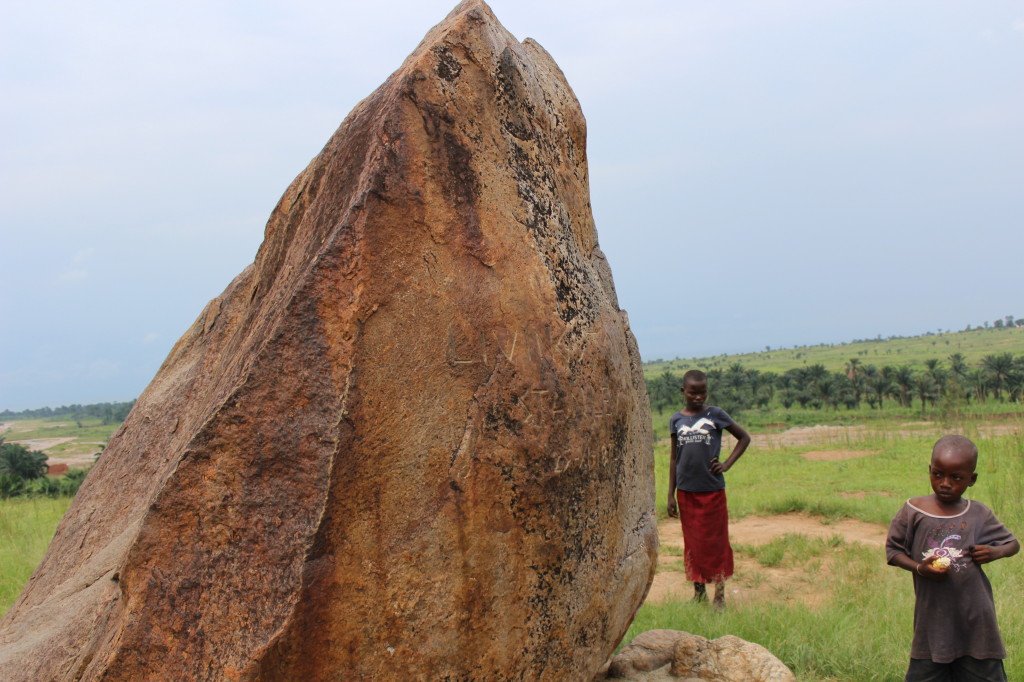
What was very interesting, though, was a crazy man with a machete and a gaggle of children that quickly approached us. He was ultimately harmless, but a little aggressive and clearly out of his mind. I also enjoyed his fresh fashion sense. Shorts with rainboots and a machete – hitting the Macy’s near you soon.
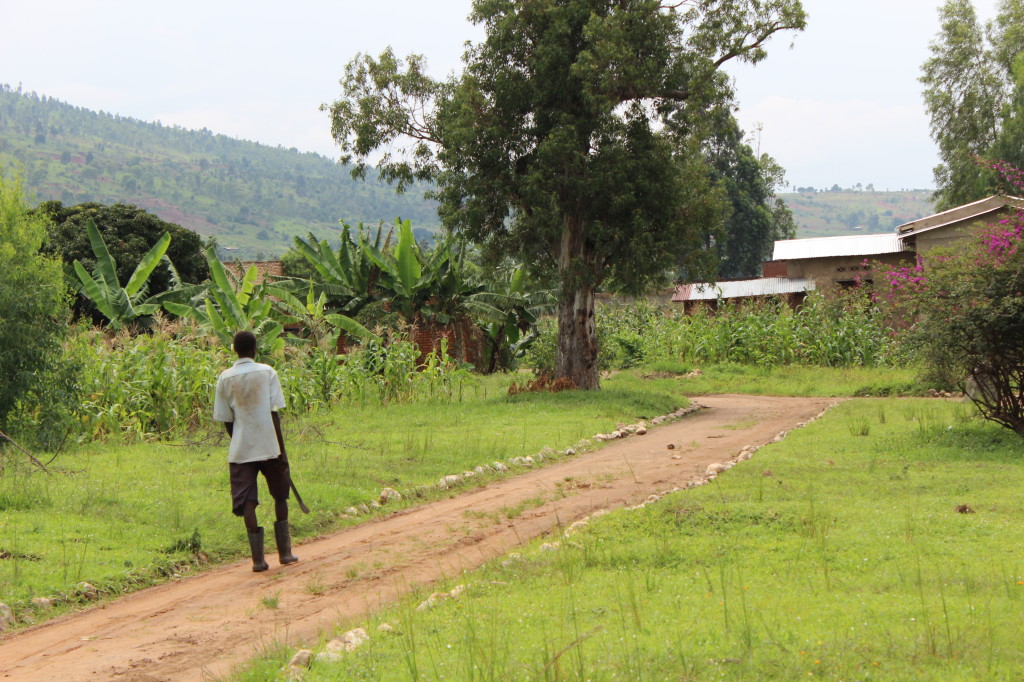 Here are some pictures of the children, and Leslie, making friends.
Here are some pictures of the children, and Leslie, making friends.
On our way to the Bujumbura city center, we got glimpses of a spectacular sight. Women with colorful baskets on their heads, carrying the baskets into a Catholic church during mass (it was Sunday). By the time we had Robert turn around and bring us back to the church, the women had unfortunately gone inside, but we did capture a picture of the celebration. I have to say, Burundi Catholic masses are way more lively and interesting than American Catholic masses – the singing alone was mesmerizing.
Then we stopped at a Freedom Fighter monument but were not allowed to take pictures since it was military property. Here’s one of Vienne, our navigator, Robert, our guide, and some local boys that came running.
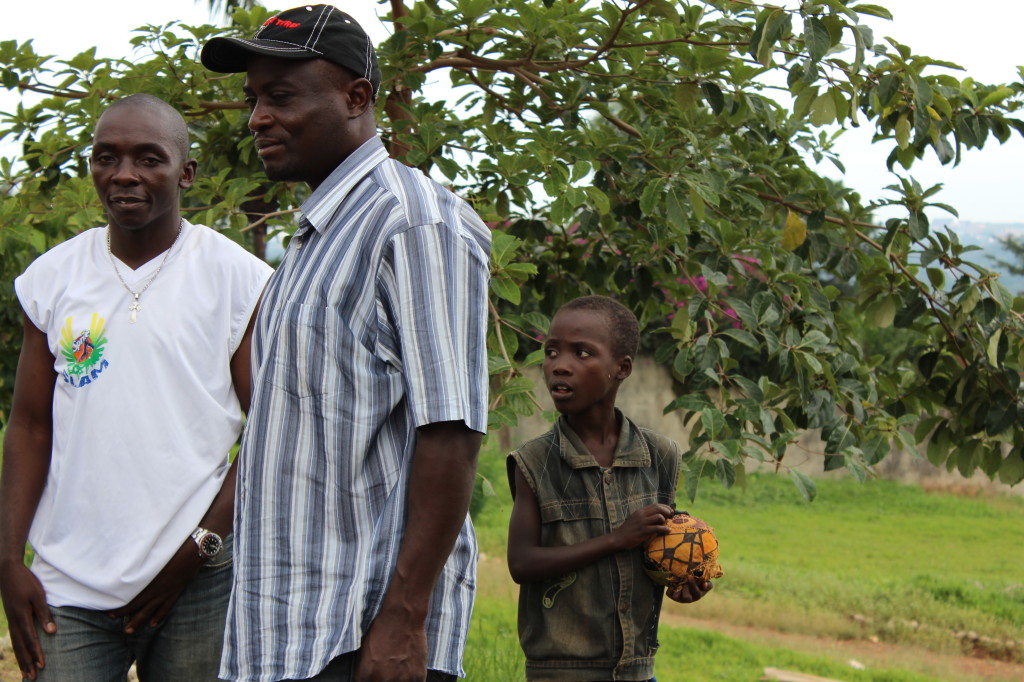 Next up was the city center, but the main markets were closed. The most interesting thing we learned was that there was an electrical fire 2 years ago that pretty much wiped everything out. You could still see remnants of it in the corrugated metal rooftops around the market. Aside from that, the fire was a distant memory.
Next up was the city center, but the main markets were closed. The most interesting thing we learned was that there was an electrical fire 2 years ago that pretty much wiped everything out. You could still see remnants of it in the corrugated metal rooftops around the market. Aside from that, the fire was a distant memory.
We got back to our hotel just in time for a cultural dance performance troop a few blocks away on the beach. After at first refusing to continue the show for us until we pay, Robert eventually got the troop to begin, with anticipation of a large “donation” to come. We were the only group watching the performance that the troop solicited for money – clearly reverse discrimination was at work! Even though we were a little insulted, we eventually cheered up as the performance got underway.
Then, to my chagrin, somehow I became part of the performance. The $20 bill that Marv slipped them probably explained it.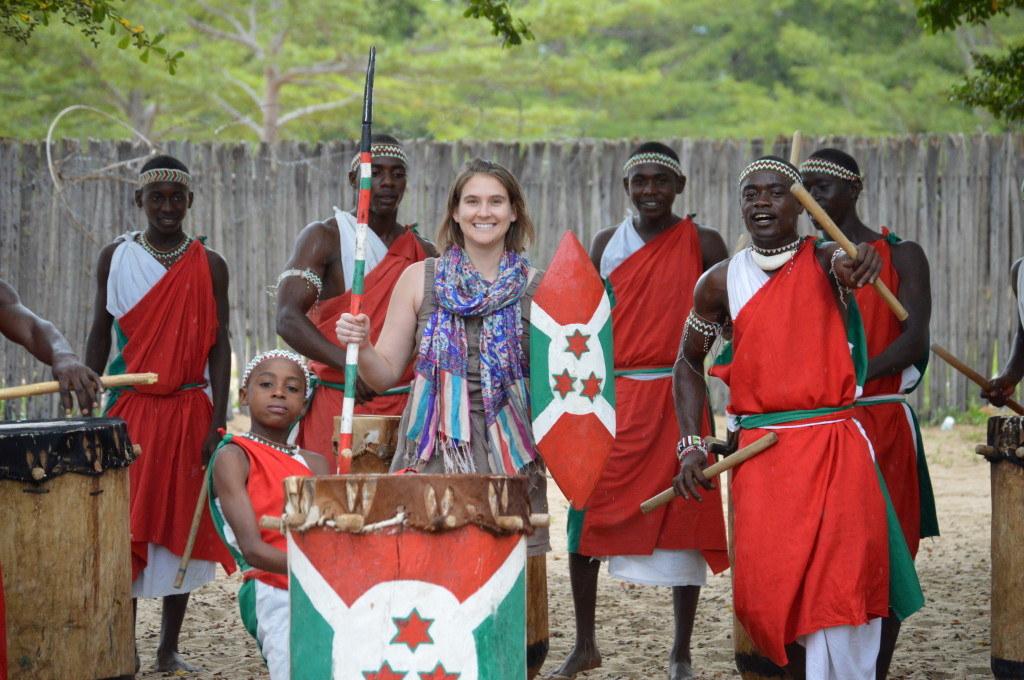 Afterwords we settled down for a beer on a rickety beach restaurant on stilts above the water.
Afterwords we settled down for a beer on a rickety beach restaurant on stilts above the water.
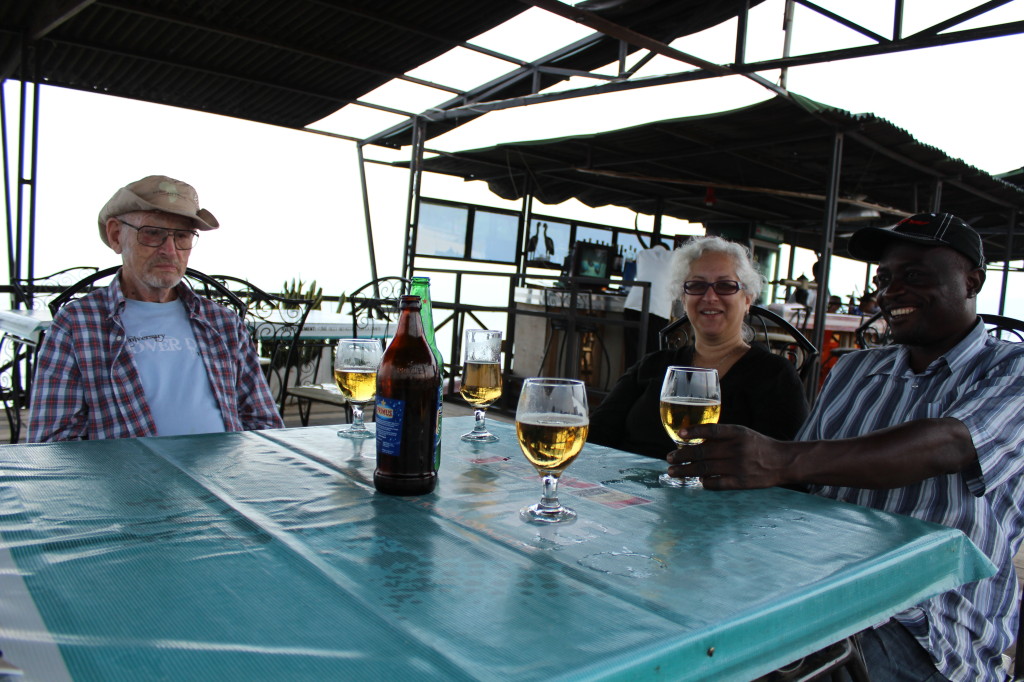
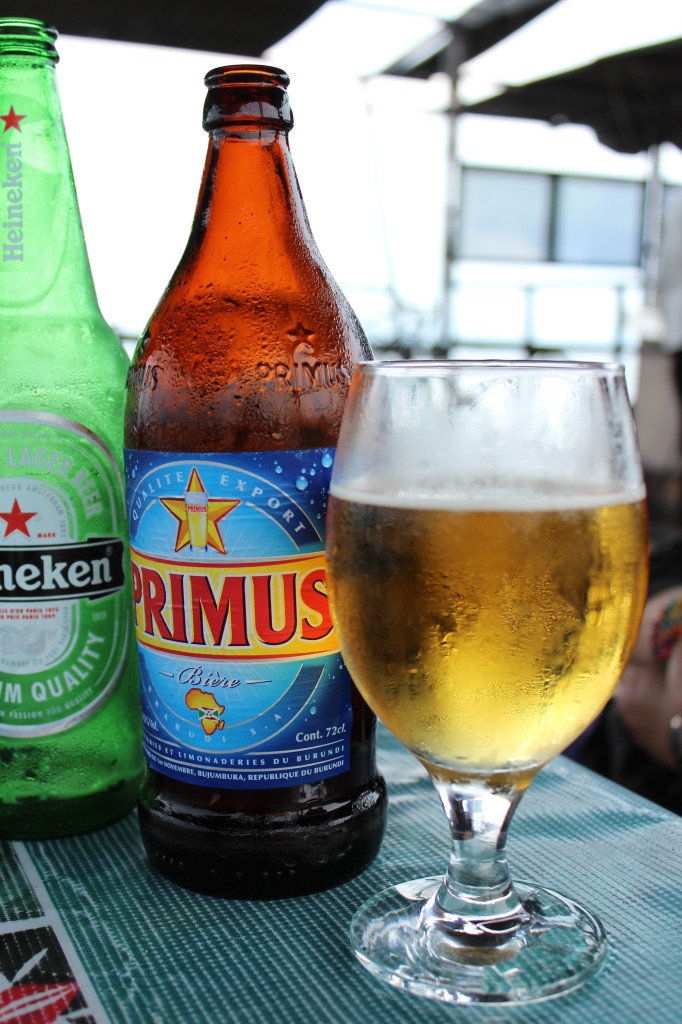 The Primus beer was good, but the view was better. It allowed us to capture some “day in the life” shots from a distance without intruding or breaking up the scene below.
The Primus beer was good, but the view was better. It allowed us to capture some “day in the life” shots from a distance without intruding or breaking up the scene below.
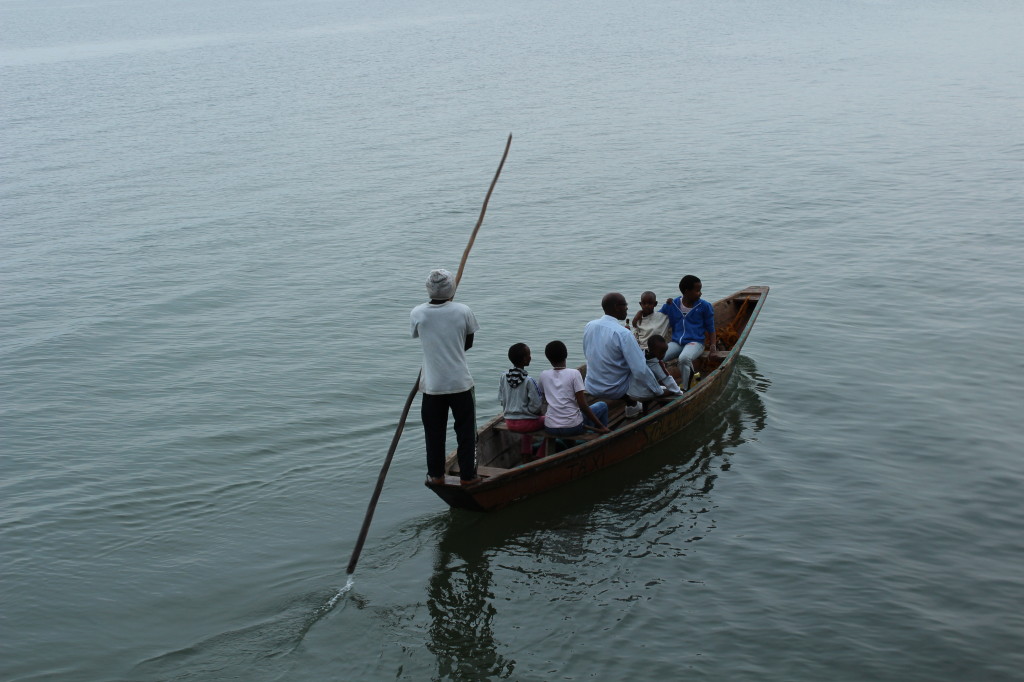
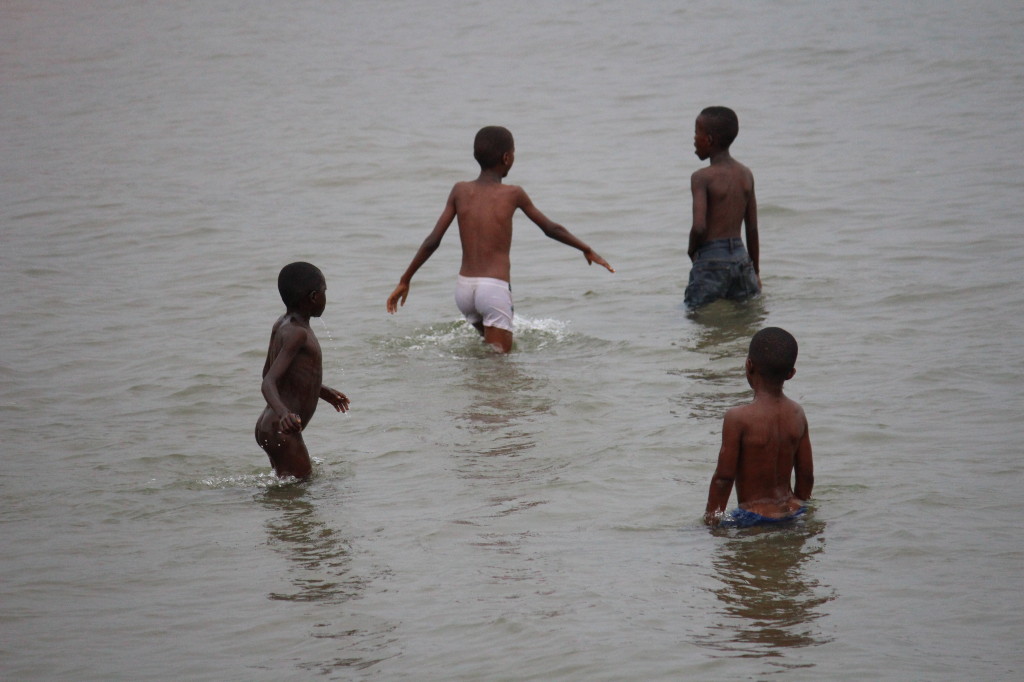 Back at our hotel, we had dinner with Robert and were so exhausted we all settled in around 1900. Still not used to the timezone yet.
Back at our hotel, we had dinner with Robert and were so exhausted we all settled in around 1900. Still not used to the timezone yet.
Tomorrow, we move to Butare, Rwanda.
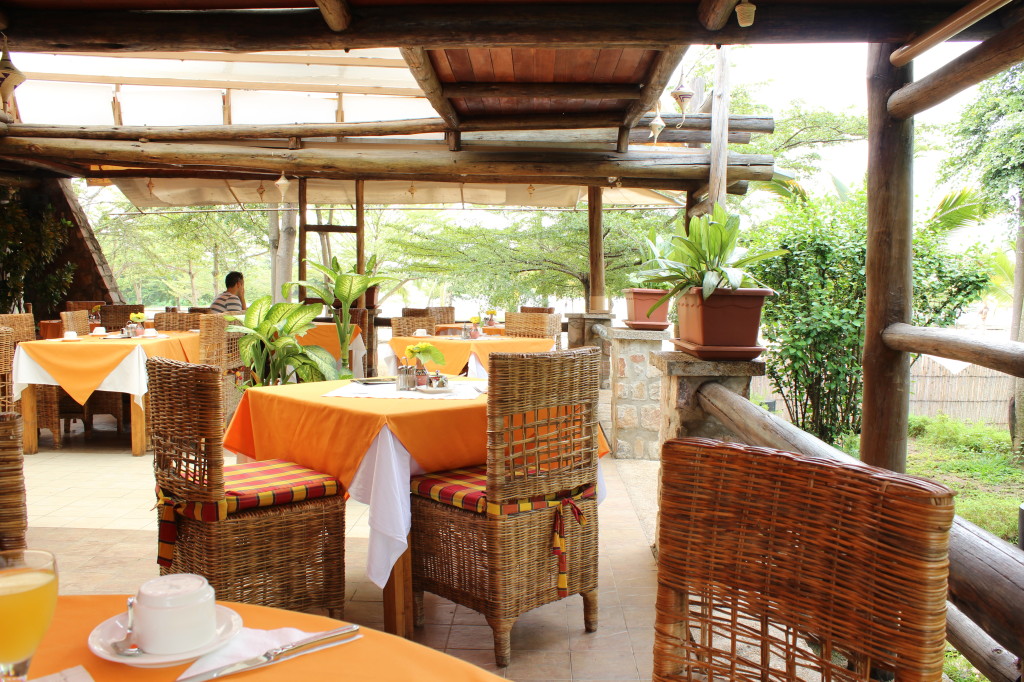
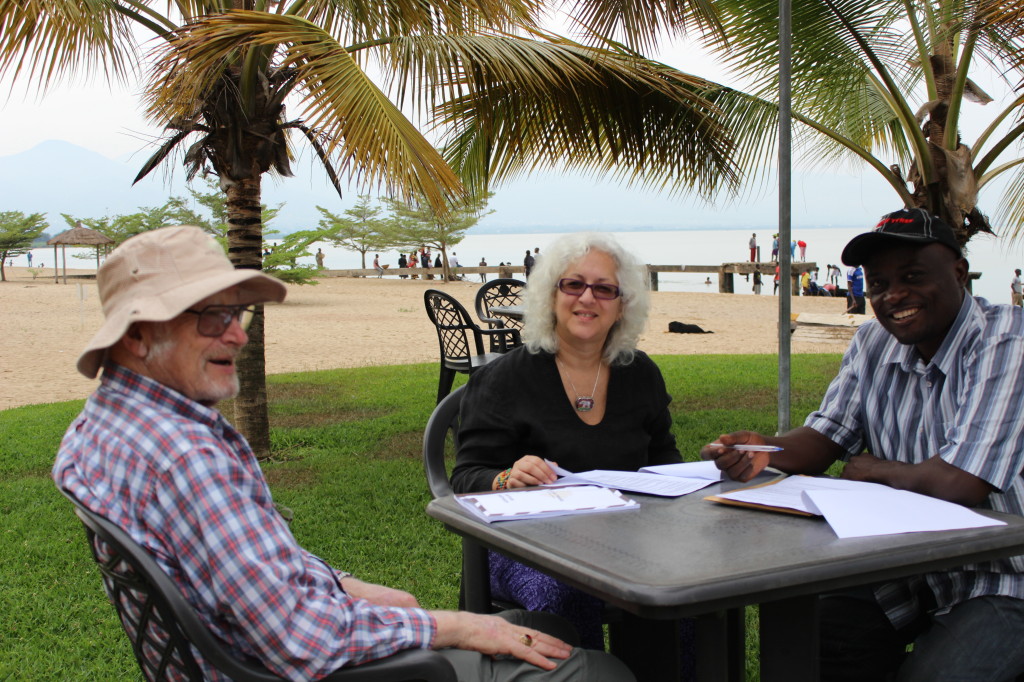
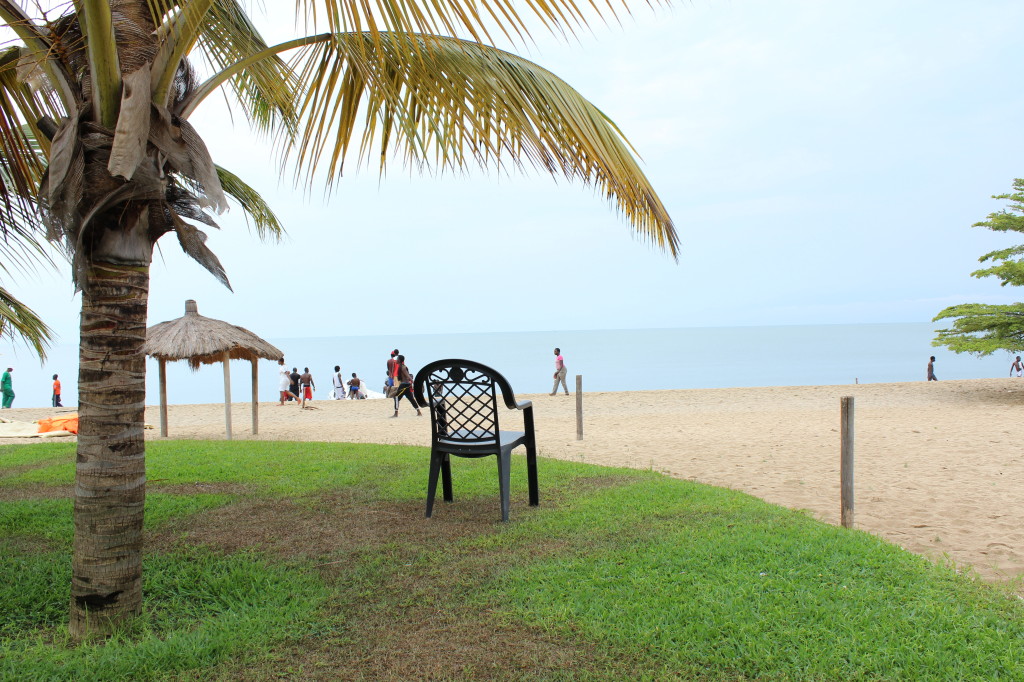
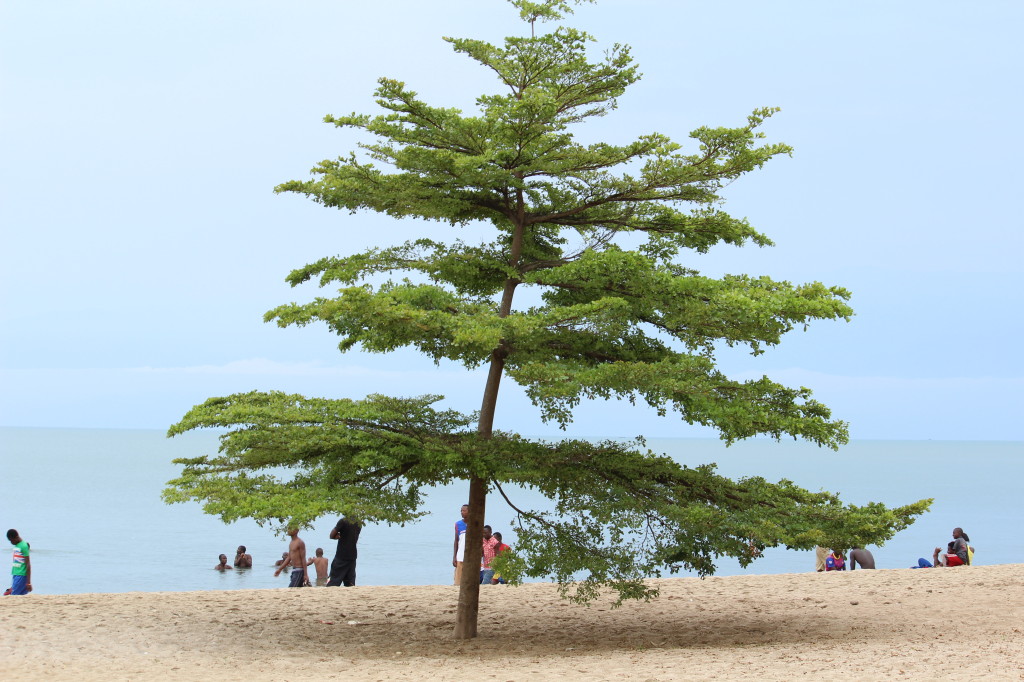
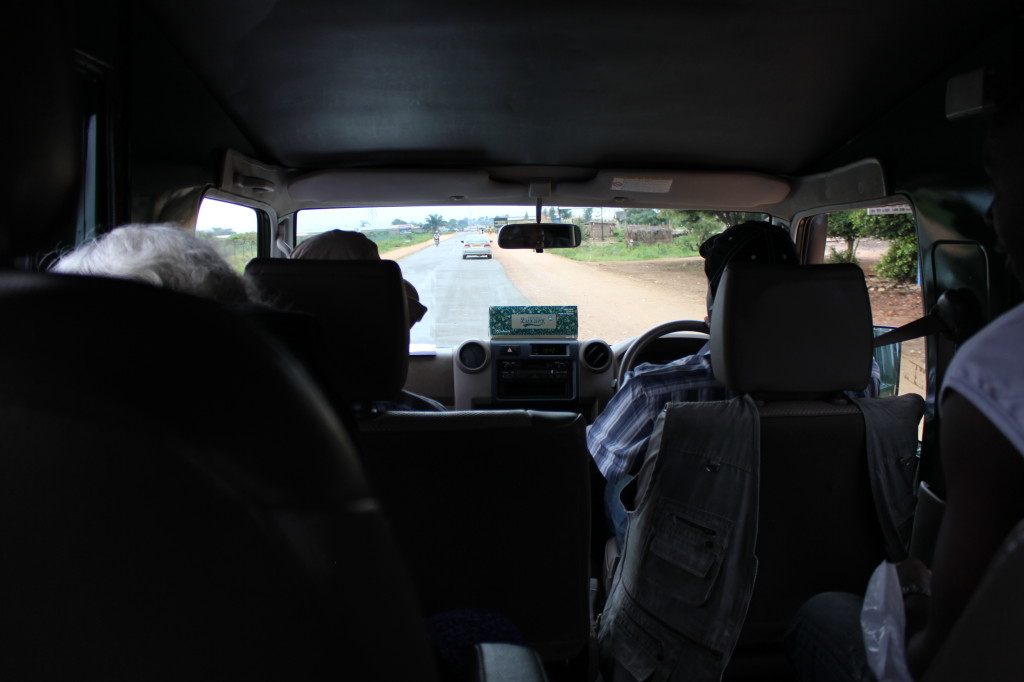
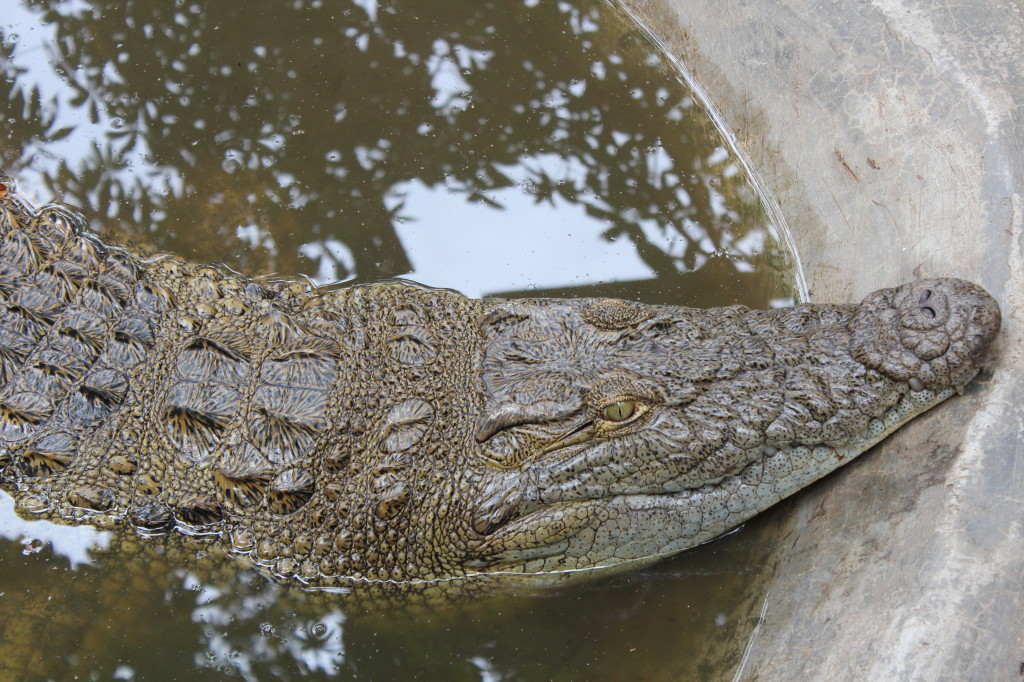
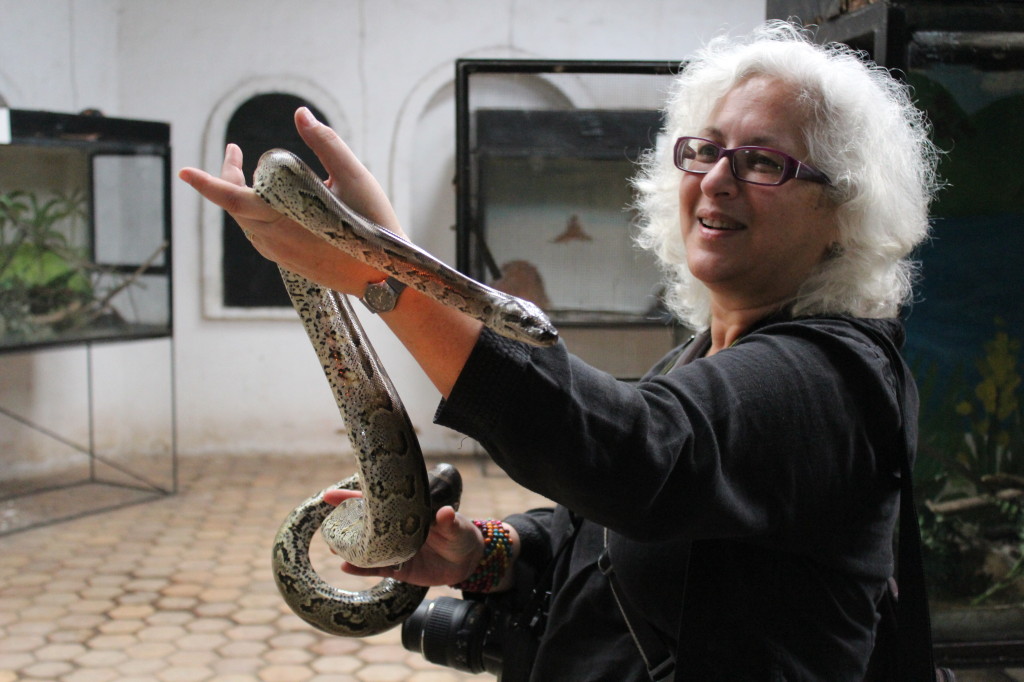
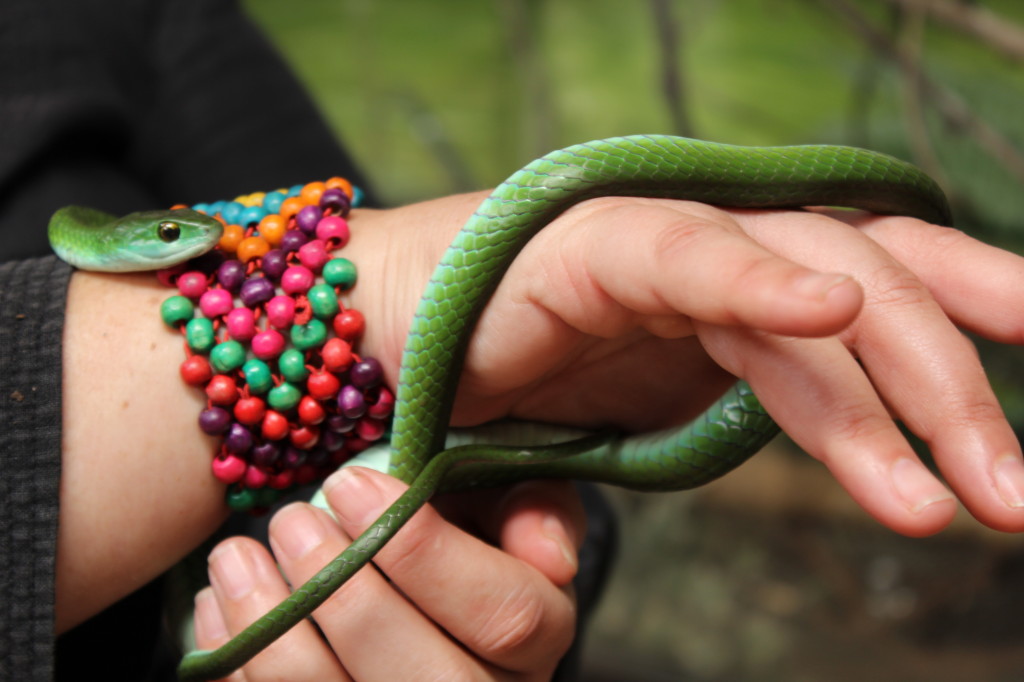
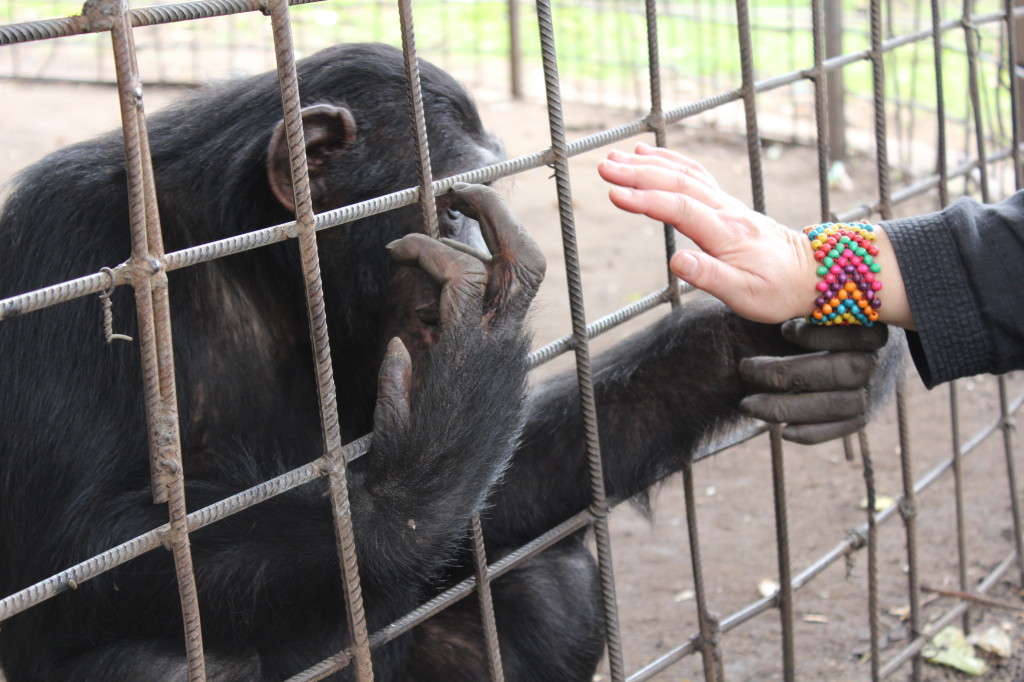
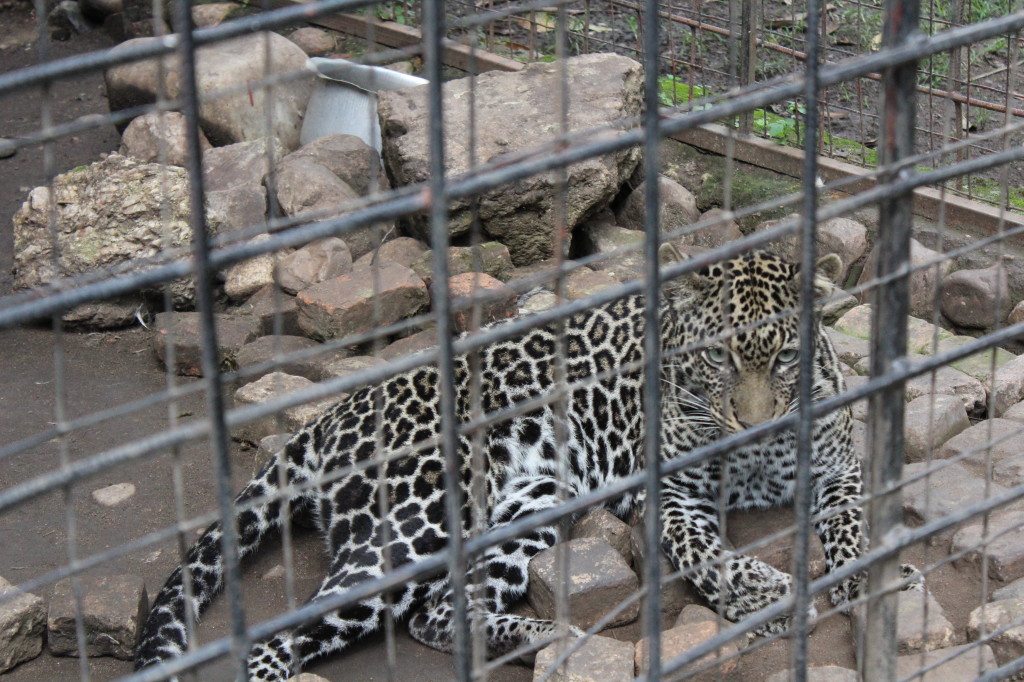
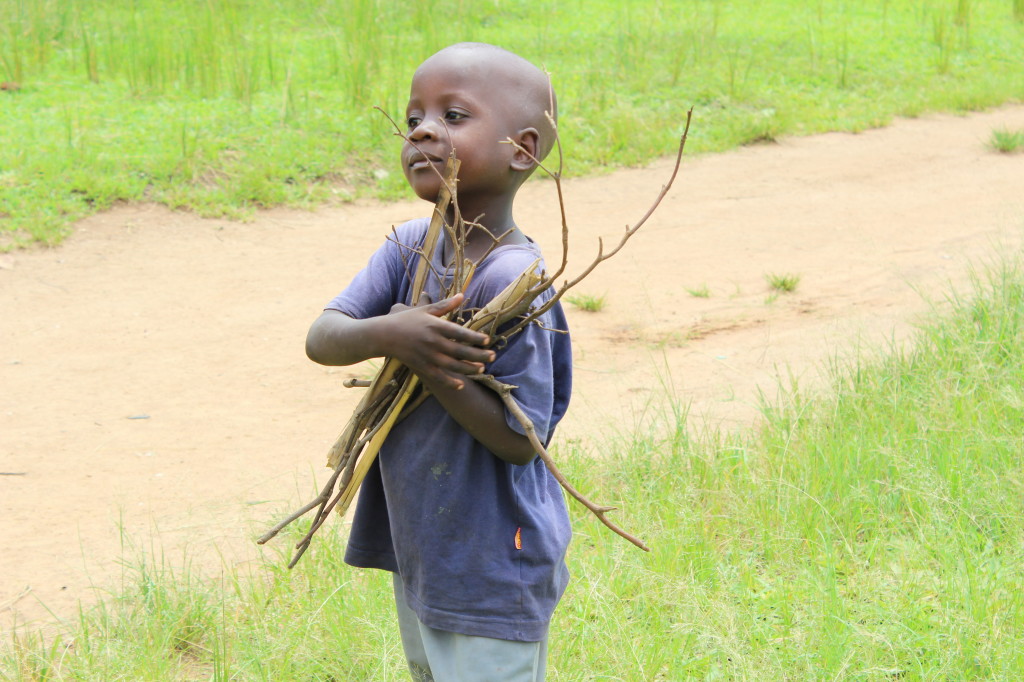
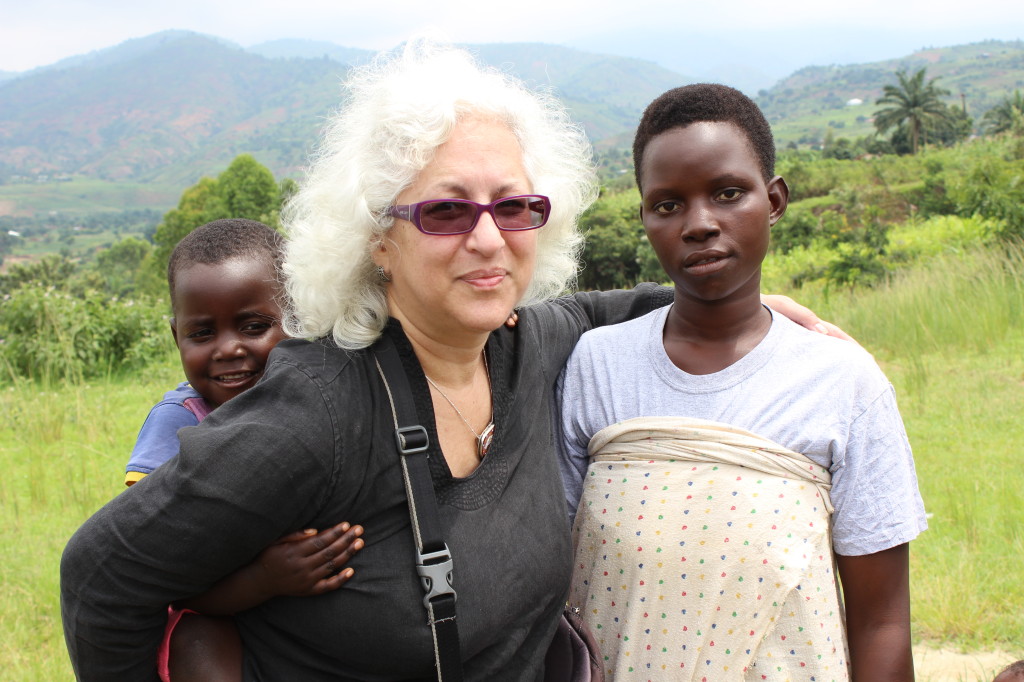
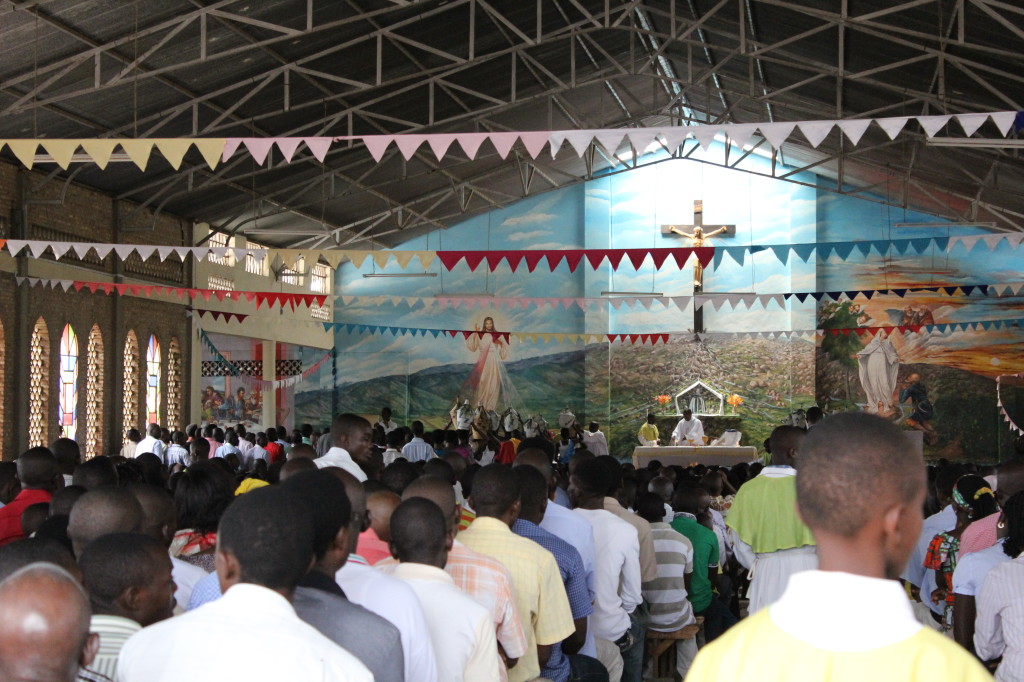
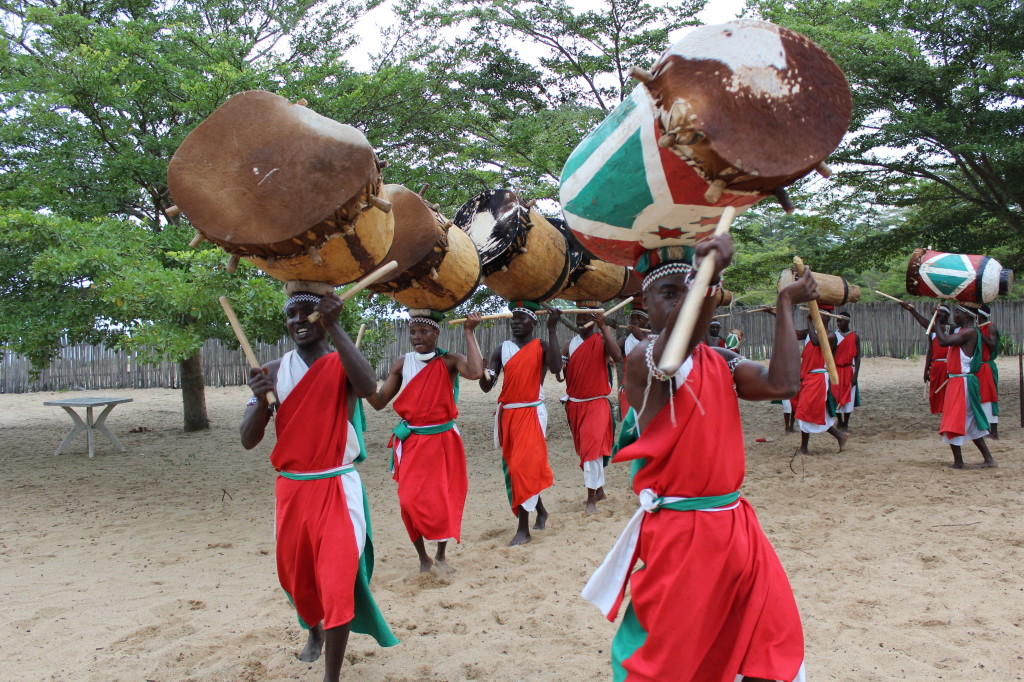
One response to “Day 1 in Bujumbura”
Love it. Especially you in festive attire and drinking primus beer. Glad Marv does not wait to the end to tip, maybe this is a new trend. So go the rules……